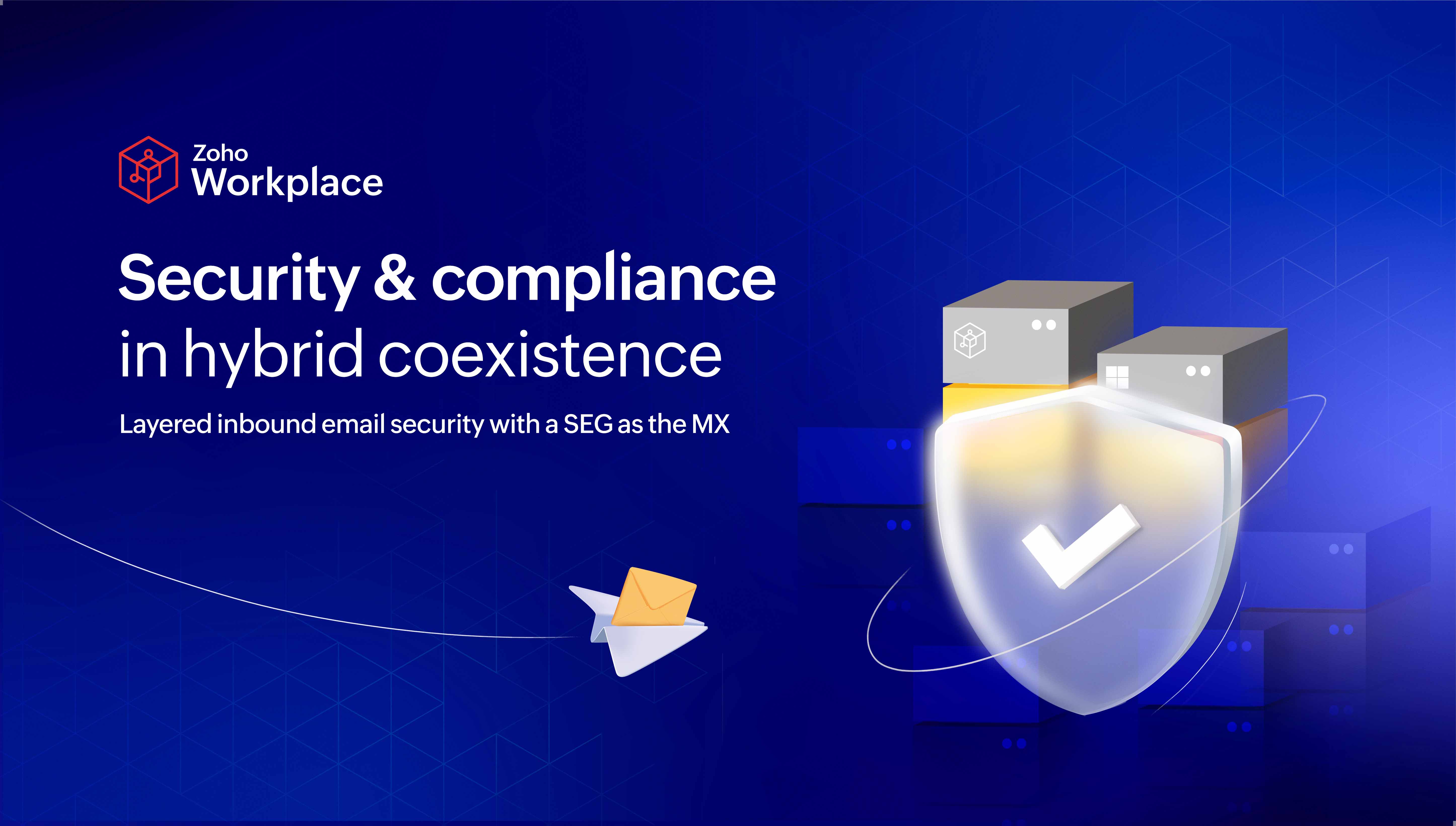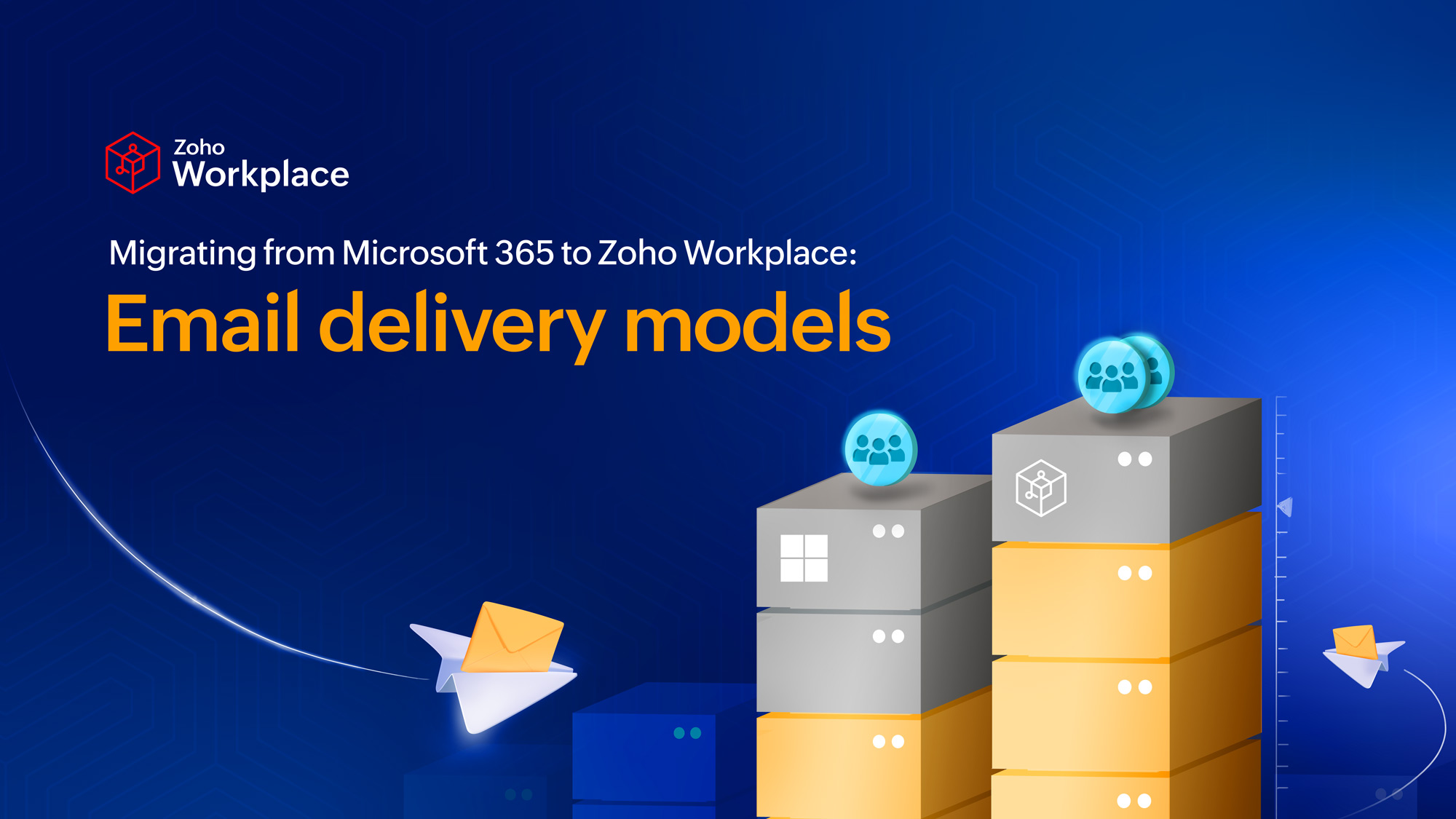- HOME
- All Products
- Analyzing the cost benefits of Zoho Workplace's flexible subscription plans against Google Workspace's pricing plans
Analyzing the cost benefits of Zoho Workplace's flexible subscription plans against Google Workspace's pricing plans
- Published : March 20, 2024
- Last Updated : April 30, 2024
- 8.8K Views
- 8 Min Read
As part of our ongoing series examining the financial implications of choosing between Zoho Workplace and Google Workspace for SMEs, we’re exploring the distinctions beyond simple pricing comparisons, touching on deeper strategic considerations that can significantly influence an organization's operational agility, scalability, and financial strategy.
This article delves into a critical aspect of this decision-making process: the contrast between Zoho's flexible subscription plans and Google Workspace's more conventional fixed plans. We aim to unravel these subscription models, focusing on the intrinsic cost advantages offered by Zoho's flexible approach. This is particularly relevant for businesses that prioritize adaptability in their collaboration tools to seamlessly accommodate their evolving workflows and team configurations.
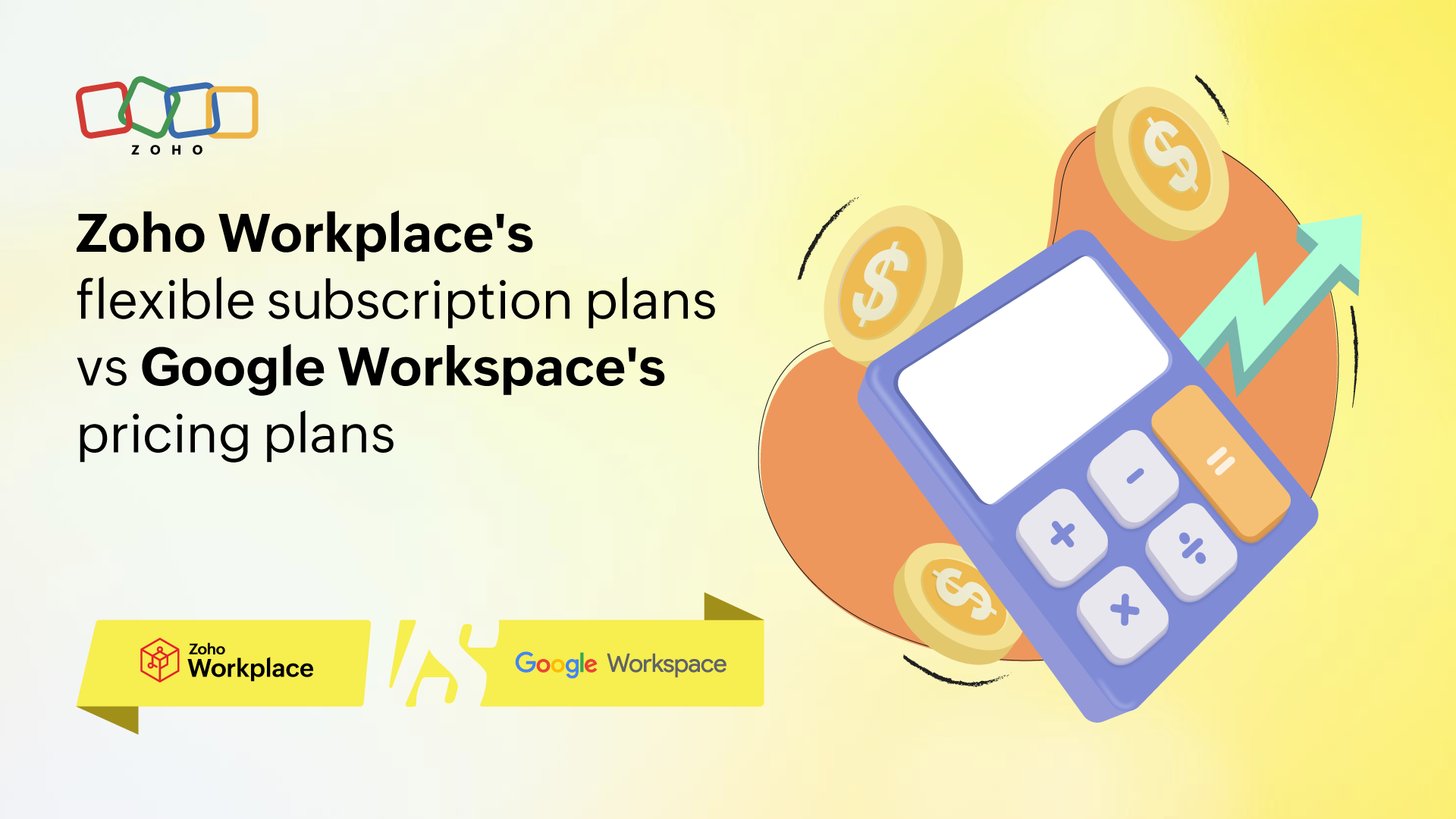
Navigating subscription models
The image below provides a comparative analysis of the subscription plans offered by Zoho Workplace and Google Workspace.
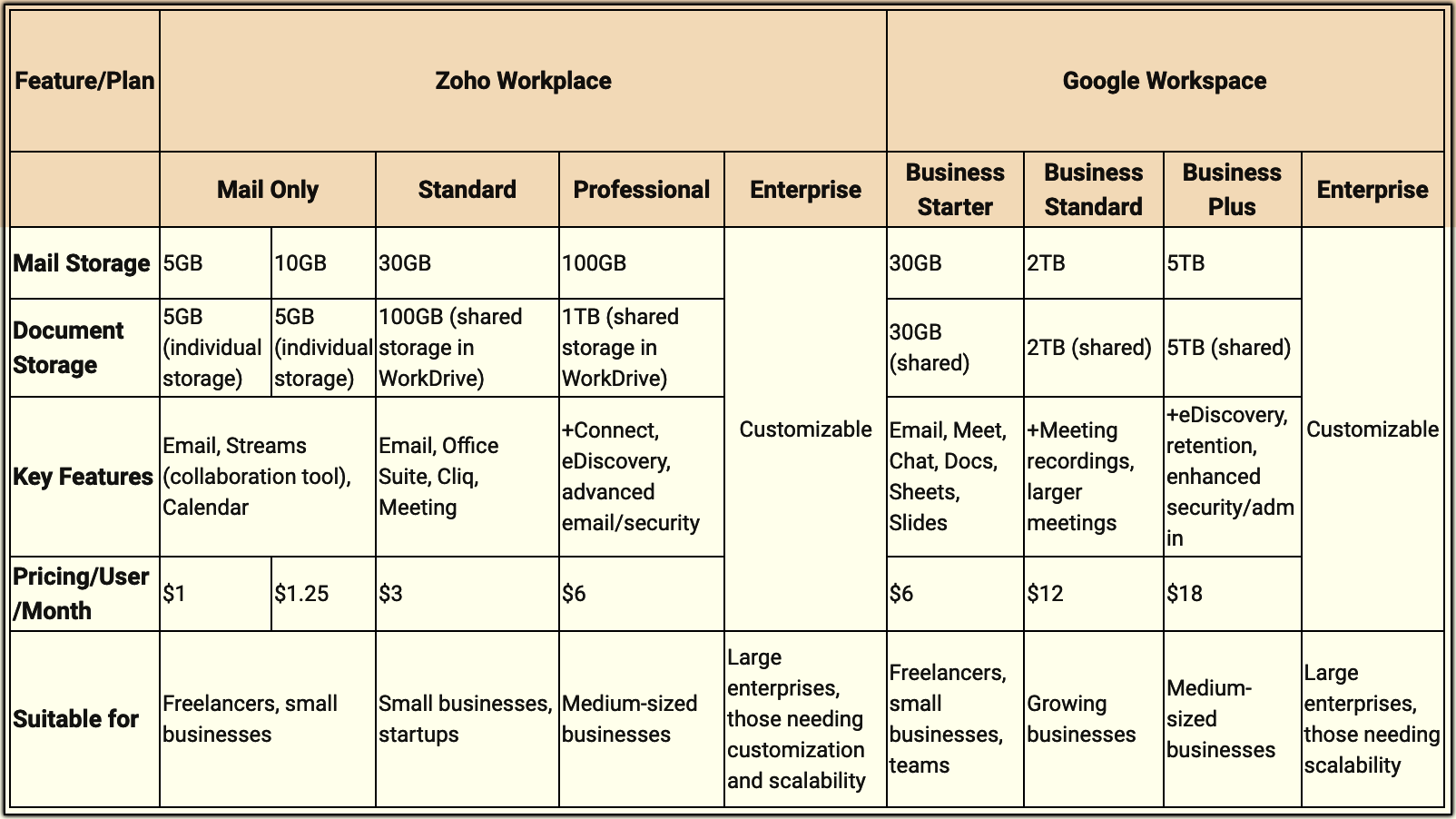
Why SMEs are switching: The hidden costs of Google Workspace for growing businesses
Google Workspace offers SMEs with less than 300 employees a fixed subscription model assuming a homogeneous need across the entire organization, which is rarely the case. This can be quite challenging for startups and small businesses due to their lack of customization. When a business grows past 300 users, it can't use Starter plans, making it harder to manage costs effectively as it scales.
In some fixed plans, newer features or tools might only be available in higher-tier plans, delaying access for businesses that could benefit from them but aren’t ready to upgrade their entire subscription.
Inflexibility in scaling
The scaling limitations of Google Workspace become apparent when a business experiences growth or changes in its operational needs. For instance, a company on the Business Standard plan might find that certain teams require more advanced features or security controls available only in the Business Plus or Enterprise plans. To accommodate this, the company would need to upgrade its entire subscription to a higher tier, even if the advanced features are only relevant for a small portion of its workforce.
This lack of customization becomes more pronounced as companies grow beyond 300 users, forcing them to abandon Starter and Standard plans for more expensive enterprise options. Although Google allows plan mixing, it restricts the use of Starter plans in such scenarios, further complicating subscription management for expanding businesses.
This lack of flexibility can be particularly challenging for businesses undergoing rapid growth or seasonal fluctuations.
Underutilized storage space
Google Workspace offers a range of plans, including Business Starter, Business Standard, and Business Plus, which provide progressively more storage per user—30GB, 2TB, and 5TB, respectively. However, start-ups with an employee count of less than 300 that have to stick to one fixed plan often end up paying for more storage than they actually use, resulting in wasted resources on unused licenses.
When a start-up opts for Google Workspace's Business Standard or a higher plan primarily for certain features, the 2TB of storage per user included may not be fully utilized, particularly if only a specific group of employees requires such extensive storage. While the pooling feature is useful for reallocating unused storage to teams that need more, it doesn't entirely address the inefficiency of surplus capacity.
Unused features
In Google Workspace, core tools like Gmail, Drive, and Calendar are widely utilized across various departments. However, the adoption rates of other tools, such as Google Sites and AppSheet, can vary.
Google Sites, available across all Google Workspace plans from Business Starter to Enterprise, facilitates the creation of websites and intranet pages. This tool is particularly useful for marketing teams creating campaign-specific microsites or for HR departments developing internal resource pages. Despite its broad availability, its utilization might be infrequent and highly department-specific, leading to its underutilization.
AppSheet, a more advanced feature, is typically included in the Business Standard plan and above. It offers a no-code platform for building custom applications for teams involved in data collection, workflow automation, and other specialized tasks. However, the need for custom app development makes AppSheet's inclusion less relevant for other teams.
Maximizing ROI with Zoho Workplace's flexible subscriptions
Transitioning from Google Workspace to Zoho Workplace offers significant advantages, particularly in terms of customizable plans and cost optimization. Unlike Google Workspace's fixed pricing model, Zoho Workplace allows organizations to tailor their subscriptions to meet specific team requirements, avoiding the pitfalls of underutilized resources.
Zoho Workplace, like Google Workspace, offers subscription plans that include pooled storage, allowing shared use among employees. This feature facilitates flexible data management and can optimize storage utilization across the organization, ensuring resources are allocated where they’re needed most.
Financial analysis using composite organization
Let's consider a composite organization of 300 employees; admin and non-technical teams may only need basic email services, while customer-facing and leadership teams require a broader suite of collaboration tools. This flexibility prevents the one-size-fits-all approach, ensuring that subscriptions directly align with actual usage.
Zoho Workplace: Distributing different Zoho plans across various teams leads to a more cost-effective structure. Let's assume that:
100 employees are on the Mail Only plan at $1/user/month.
150 employees are on the Workplace Standard plan at $3/user/month.
50 employees are on the Workplace Professional plan at $6/user/month.
Total annual cost: $10,200.
Google Sites equivalent: Zoho Sites (Pro plan) for the organization per year = $204
Google Forms equivalent: Zoho Survey (Pro plan) for the organization per year = $420
Google AppSheet equivalent: Zoho Creator for 15 users in the organization = $1,800
The total annual cost along with purchase of additional applications would be $12,624.
Subscription cost analysis
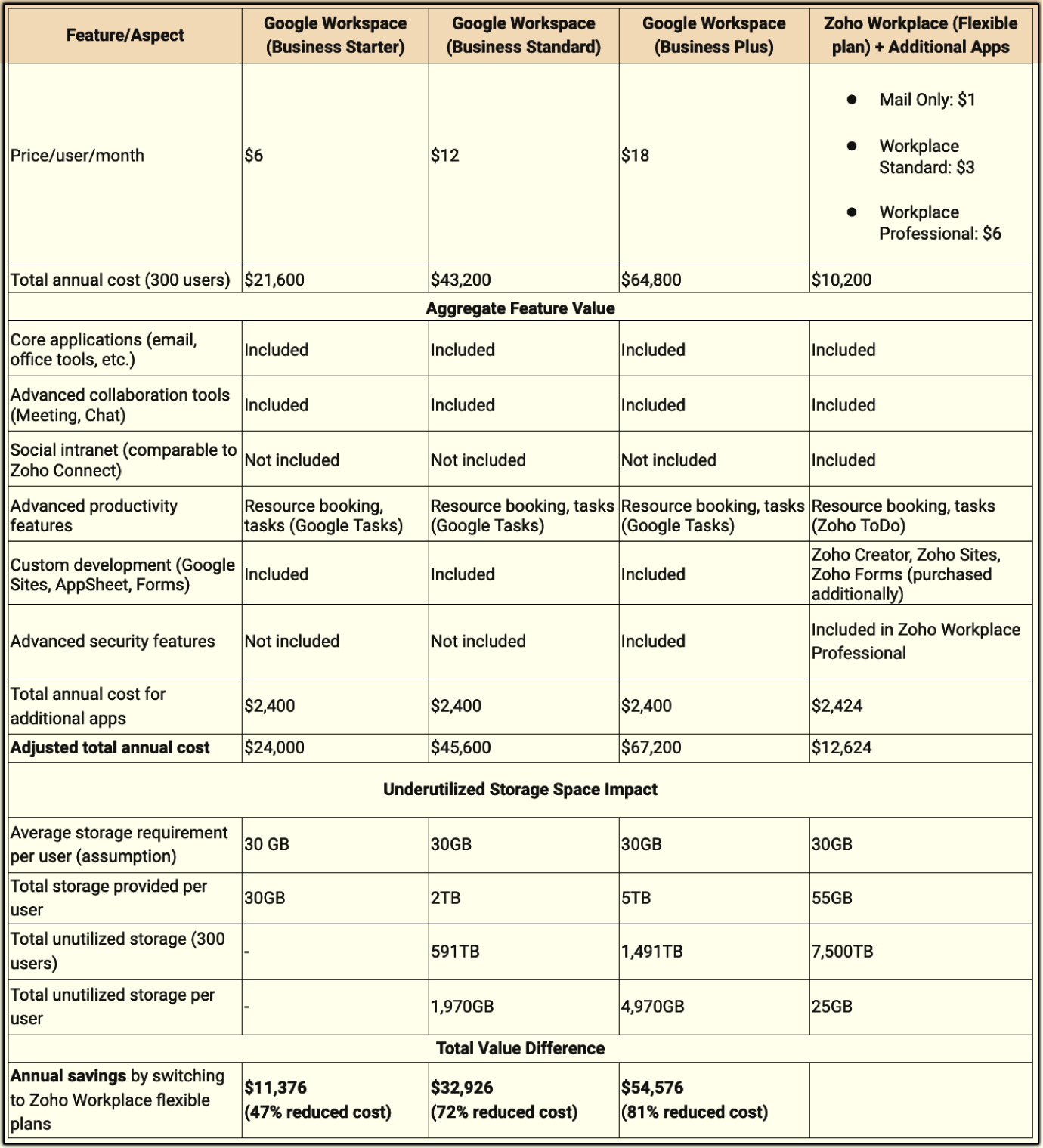
If teams in Zoho Workplace require additional storage, they can upgrade at a reasonable rate of $29/month for 1TB of storage.
Cost analysis: Google Workspace flexible plan vs Zoho Workplace flexible plan
Financial analysis using composite organization
Consider a composite organization with 500 employees, encompassing multiple teams with diverse digital requirements. Operational teams like admin and finance may only need basic workplace services such as email and team chat, while customer-facing and leadership teams might require a broader suite of collaboration tools. Other teams might need larger storage spaces, and some might require advanced security features for their workplace.
The one-size-fits-all workplace plan approach wouldn't work for an organization like this.
Let's examine the financial analysis of the flexible plans offered by Google Workspace and Zoho Workplace for such a composite organization.
Google Workspace: Google Workspace requires organizations with over 300 users to move to the Enterprise plan. For this analysis, let's consider the composite organization of 500 employees and distribute the Google Workplace plan among them. Let’s assume that based on their organizational requirements, they club the Google Workspace plans as follows:
100 employees on the Enterprise Standard plan at $20/user/month.
100 employees on the Business Plus plan at $18/user/month.
300 employees on the Business Standard plan at $12/user/month.
The total annual cost amounts to $110,400.
Zoho Workplace: When the composite organization switches to Zoho Workplace, it strategically allocates subscriptions based on team functions, enhancing cost-efficiency and resource utilization. They divide the workforce into groups according to their needs as follows:
100 employees on the Mail Only plan at $1/user/month.
100 employees on the Workplace Standard at $3/user/month.
300 employees on the Workplace Professional at $6/user/month.
The total annual cost amounts to $26,400.
Zoho’s stand-alone applications that are Google’s equivalent: Zoho Sites (Google Sites equivalent), Zoho Survey (Google Forms equivalent), Zoho Creator (Google AppSheet equivalent)
This table highlights the cost and feature benefits of Zoho Workplace's flexible plans over Google Workspace for a 500-user organization.
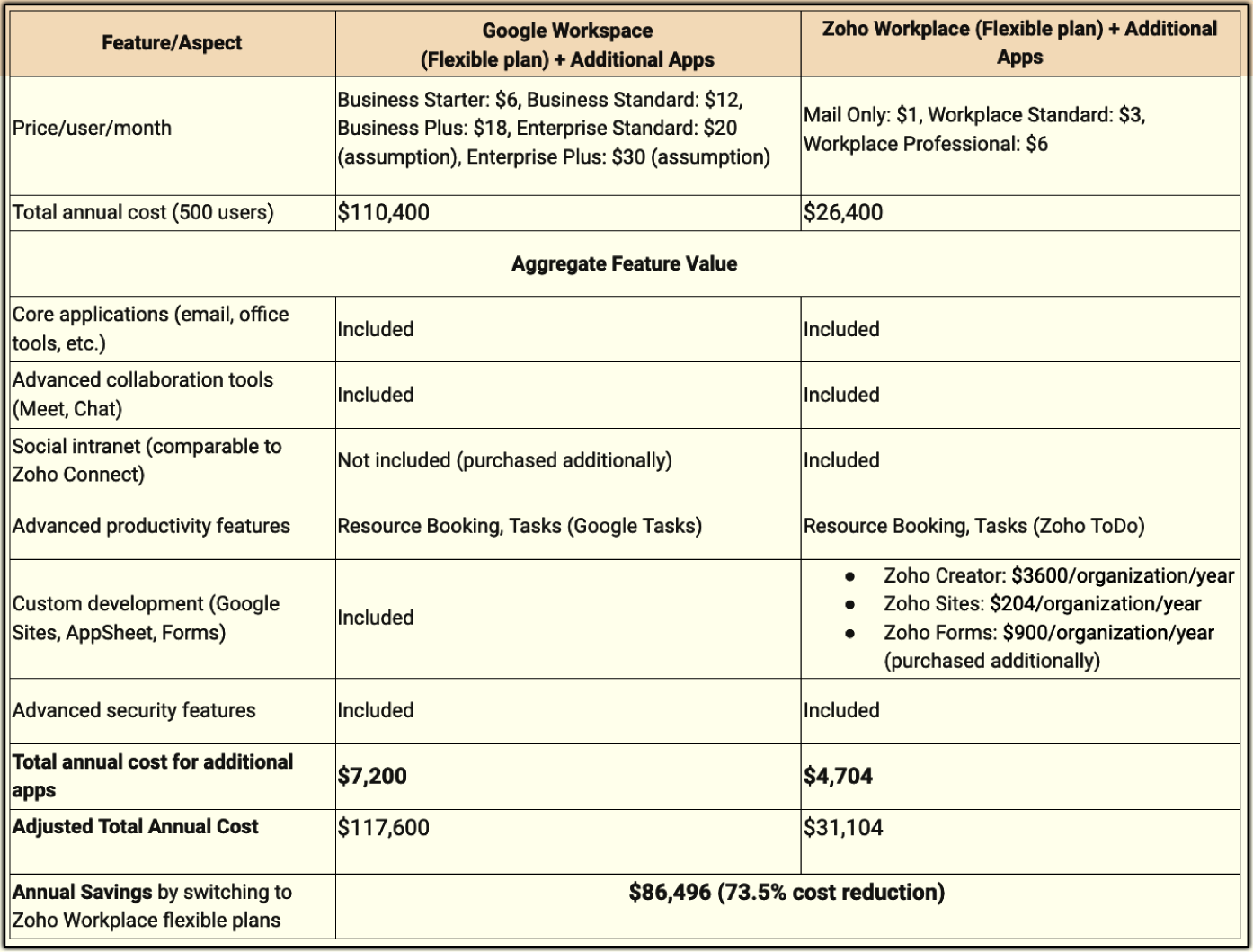
Conclusion
The subscription cost analysis between Google Workspace plans and Zoho Workplace's flexible plan, with the addition of necessary apps, reveals significant financial advantages for businesses opting for Zoho Workplace.
Switching to Zoho Workplace from any of the Google Workspace plans results:
Google Workspace Business Starter users save $11,376 (47% of their current cost)
Google Workspace Business Standard users save $32,926 (72% of their current cost)
Google Workspace Business Plus users save $54,576 (81% of their current cost)
Transitioning from Google Workspace’s Enterprise Plan (flexible plan) to Zoho Workplace’s flexible plan, the organization saves $86,496 (73.5% of their current cost).
The analysis also shows a massive amount of underutilized storage space for Google Workspace users, especially at higher tiers. The Business Standard and Business Plus plans have 591TB and 1,491TB of underutilized storage, respectively, across 300 users. The significant underutilized storage in Google Workspace implies that businesses may be paying for a surplus of resources they don’t use or need. In contrast, Zoho's more balanced storage offering, closer to the average requirement, may contribute to its overall cost-effectiveness and value proposition, as reflected in the substantial annual savings achievable by switching to Zoho.
Future discussions will delve deeper into other factors and metrics to quantify financial benefits further, exploring how Zoho's adaptability contrasts with the limitations of Google Workspace's rigid structure, and presenting new insights tailored to SMEs.
The information presented in this article is based on the standard pricing plans available directly from the official websites of Zoho Workplace and Google Workspace as of March 1, 2024. It is important to note that this analysis does not take into account any customized plans or pricing adjustments that may be offered through third-party partners or distributors. Particularly for Google Workspace, the critique regarding the lack of customization and flexibility primarily addresses the limitations observed in off-the-shelf plans available directly from their website. This includes mandatory upgrades to Enterprise plans for organizations with over 300 users and restrictions on mixing Starter plans with other tiers. These conditions can significantly impact businesses seeking scalable and flexible IT solutions as they grow. Readers should consider that alternative or custom plans might be available through authorized partners, which could provide additional features or tailored solutions not detailed here.
Disclaimer: All names and marks mentioned here remain the property of their original owners. Prices are as published by the named competitors on their website(s) on the date(s) shown and are subject to change without notice. Prices published here exclude taxes or discounts. The information on this webpage is not validated and is for general information purposes only. Zoho disclaims liability for any errors, omissions, or losses consequential upon any reliance on information contained here.
This article is co-authored by Sandeep Kotla and Vignesh S.
Sandeep is an accomplished inbound marketer at Zoho Corporation, specializing in digital workplace strategies, digital transformation initiatives, and enhancing employee experiences. Previously, he handled analyst relations and corporate marketing for Manage Engine (a division of Zoho Corp) and its suite of IT management products. He currently spends most of his time re-imagining and writing about how work gets done in large organizations, reading numerous newsletters, and Marie Kondo-ing his inbox.
Vignesh works as a Marketing Analyst at Zoho Corporation, specializing in content initiatives and digital workplace strategies. He's a passionate creator with a penchant for marketing and growth. In his free time, you can see him shuffling between books, movies, music, sports, and traveling, not necessarily in the same order.
